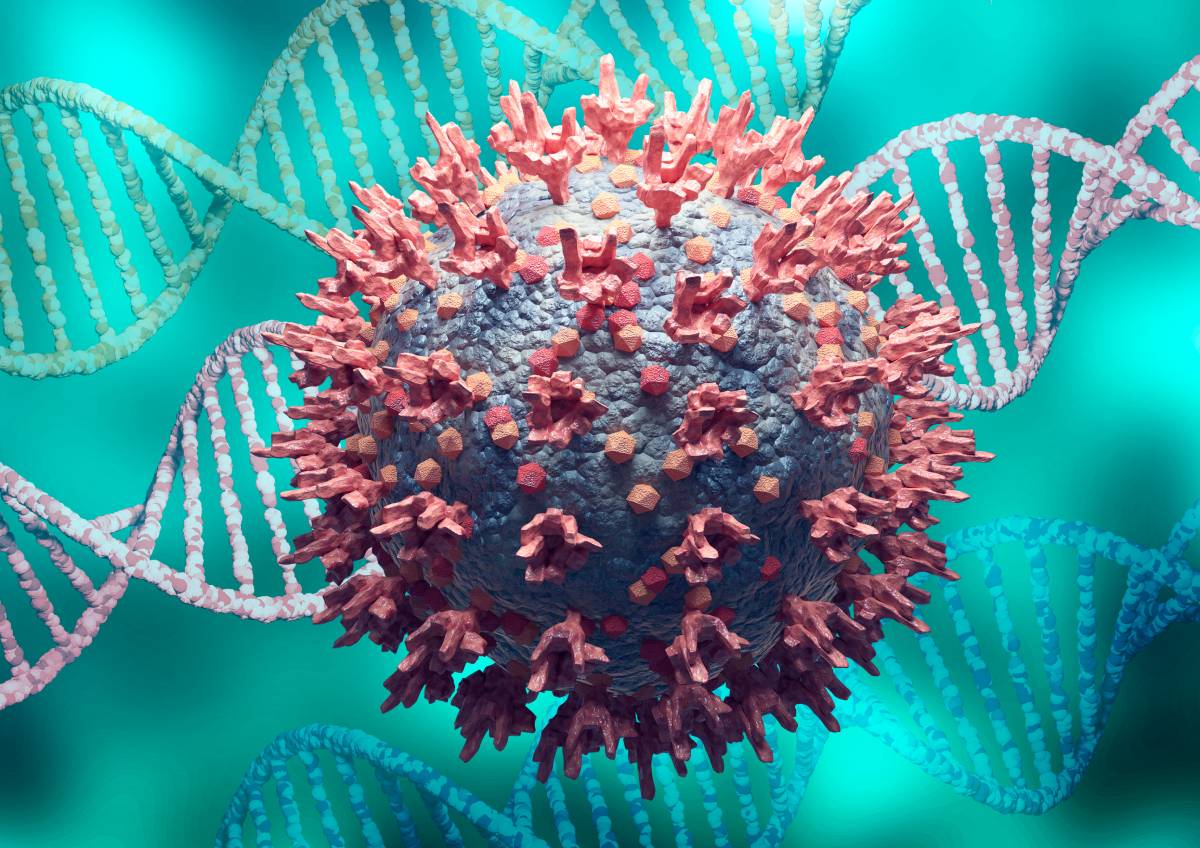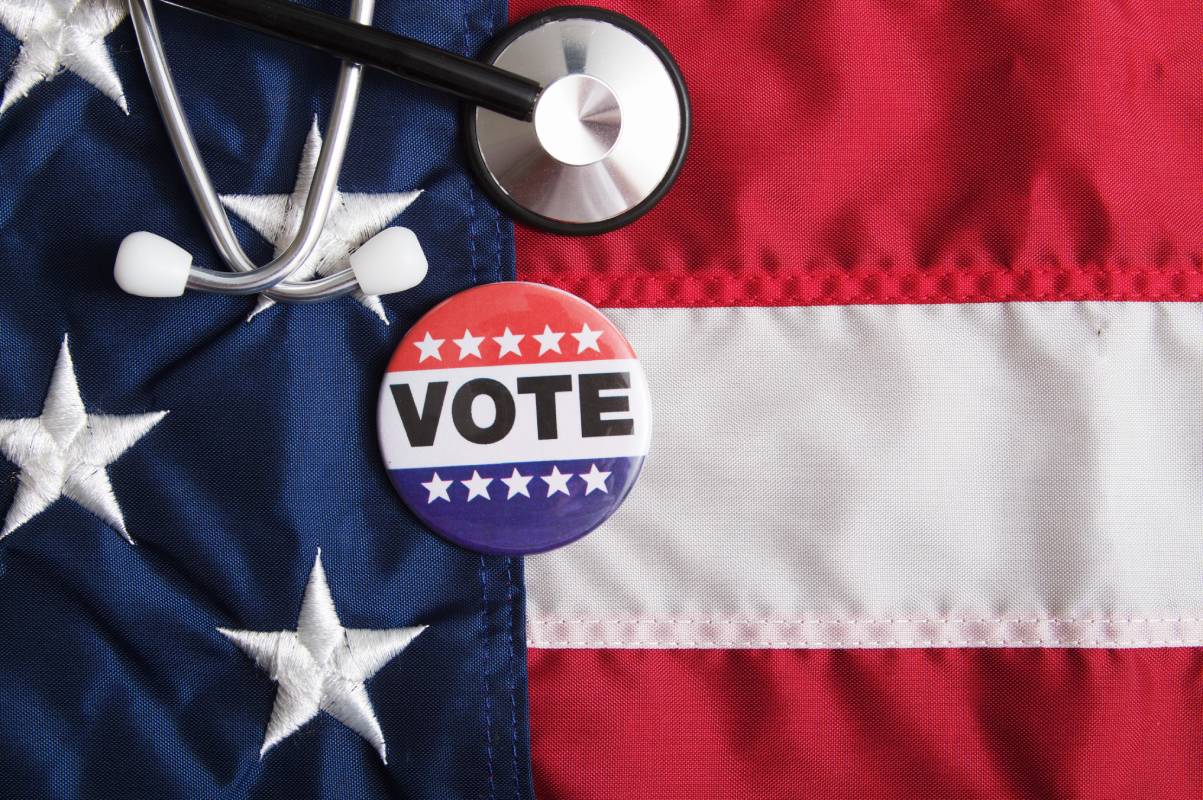
Since the beginning of the pandemic, at least 60% of Americans have been infected with COVID-19 (1). Contrary to initial predictions, reinfection from the virus is not uncommon, despite immunity induced by previous exposure or vaccination (2). As defined by the Centers for Disease Control and Prevention (CDC), reinfection can be diagnosed if a patient had COVID-19, recovered, and later became infected again, as confirmed by a polymerase chain reaction (PCR) test (3). Reinfections can occur from weeks to over a year since the first infection, though patients often present with mild symptoms (4). Throughout the pandemic, the rate of COVID-19 reinfection has changed over time with the emergence of each variant.
At the beginning of the pandemic, reinfections from the first variants of the virus appeared to be extremely rare (2). However, with the emergence of the delta variant in 2021, reinfections increased significantly due to the strain’s high transmissibility and ability to evade immune responses (5). Approximately 63 to 167% more transmissible than the alpha strain, the delta variant could avoid neutralization from antibodies and replicate at faster speeds, resulting in higher viral loads and more severe symptoms (6, 7). According to one major study with over 27,000 participants, delta reinfections constituted 1.16% of total cases, while alpha reinfections comprised only 0.46% (8). While higher than that of alpha, the rate of delta reinfections still remained low due to vaccinations, which demonstrated decreased but significant efficacy in preventing infection (8).
After a decrease in COVID-19 cases, the omicron variant emerged in late 2021, causing a significant increase in infections (8). Although associated with less severe symptoms, the omicron variant had a transmissibility 2 to 4 times higher than the delta strain (9). Like delta, the omicron variant could evade immune responses due to mutations in its genome, but omicron contained novel, pernicious mutations that allowed it to prevent antibodies from binding to it (10). Due to these mutations, vaccines were significantly less effective in preventing omicron infection, with two-dose vaccine efficacy dropping to 55% after 20 weeks, compared to 88% efficacy against alpha (11). With its extremely high transmissibility and ability to evade immune responses produced by vaccines and previous infections, the omicron variant has proved to be the most common source of COVID-19 reinfection over time (8). According to the aforementioned study, omicron reinfections constituted 13% of all COVID-19 cases, but researchers estimate that the actual rate is significantly higher due to the prevalence of asymptomatic omicron reinfections and unreported at-home rapid tests (8). Additionally, the study reported that the median time from the first infection to omicron reinfection was significantly longer at 361 days compared to 204 for alpha and 291 for delta; however, omicron also constituted 96.6% of reinfections that occurred after less than one year (8). These statistics both demonstrate the power of omicron in reinfecting patients.
As the world returns to normalcy, COVID-19 reinfection presents a critical problem that many health experts believe will compound over time. Although symptoms are typically mild, reinfections can increase the risk of adverse health events (12). With each additional reinfection, the risk of developing musculoskeletal conditions, diabetes, kidney disease, and mental health conditions increases (12). Researchers also fear that reinfections may predispose patients to “long COVID,” a condition in which COVID-19 symptoms persist for months after the patient no longer tests positive for the virus (12). As the omicron variant causes the most reinfections, researchers emphasize that individuals obtain the new Moderna and Pfizer bivalent boosters which, unlike the original vaccines, specifically target omicron (13). While the initial two-dose regimen still provides protection against severe symptoms and hospitalization, the bivalent boosters show 37% higher efficacy against severe infection than the monovalent boosters (13). In addition to bivalent boosters, researchers also recommend the continuation of COVID-19 protocols — masking, disinfecting, and social distancing (14). Although the worst of the pandemic may be over, the risk of COVID-19 reinfections presents a critical challenge in the post-pandemic world.
References
1: Clarke, K., Jones, J., Deng, Y., Nycz, E., Lee, A., Iachan, R., Gundlapalli, A., Hall, A. and MacNeil, A. 2022. Morbidity and mortality weekly report. MMWR 71(17):606-608. DOI: 10.15585/mmwr.mm7117e3.
2: Hall, V., Foulkes, S., Charlett, A., Atti, A., Monk, E., Simmons, R., Wellington, E., Cole, M., Saei, A., Oguti, B., Munro, K., Wallace, S., Kirwan, P., Shrotri, M., Vusirikala, A., Rokadiya, S., Kall, M., Zambon, M., Ramsay, M., Brooks, T., Brown, C., Chand, M. and Hopkins, S. 2021. SARS-CoV-2 infection rates of antibody-positive compared with antibody-negative health-care workers in England: a large, multicentre, prospective cohort study (SIREN). Lancet 397(10283):1459-1469. DOI: 10.1016/S0140-6736(21)00675-9.
3: Centers for Disease Control and Prevention. 2023. Reinfection. URL: https://www.cdc.gov/coronavirus/2019-ncov/your-health/reinfection.html.
4: Abu-Rabbad, L., Chemaitelly, H. and Bertollini, R. 2021. Severity of SARS-CoV-2 reinfections as compared with primary infections. New England Journal of Medicine 2021(385):2487-2489. DOI: 10.1056/NEJMc2108120.
5: Planas, D., Veyer, D., Baidaliuk, A., Staropoli, I., Guivel-Benhassine, F., Rajah, M., Planchais, C., Porrot, F., Robillard, N., Puech, J., Prot, M., Gallais, F., Gantner, P., Velay, A., Guen, L., Kassis-Chikani, N., Edriss, D., Belec, L., Seve, A., Courtellemont, L., Pere, H., Hocqueloux, L., Fafi-Kremer, S., Prazuck, T. and Schwartz, O. 2021. Reduced sensitivity of SARS-CoV-2 variant Delta to antibody neutralization. Nature 2021(596):276-280. DOI: 10.1038/s41586-021-03777-9.
6: Earnest, R., Uddin, R., Matluk, N., Renzette, N., Turbett, S., Siddle, K., Loreth, C., Adams, G., Tomkins-Tinch, C., Petrone, M., Rothman, J., Breban, M., Koch, R., Billig, K., Fauver, J., Vogels, C., Bilguvar, K., Kumar, B., Landry, M., Peaper, D. and Grubagh, N. 2022. Comparative transmissibility of SARS-CoV-2 variants Delta and Alpha in New England, USA. Cell Reports Medicine 3(4):100583. DOI: 10.1016/j.xcrm.2022.100583.
7: Mlcochova, P., Kemp, S., Dhar, M., Papa, G., Meng, B., Ferreira, I., Datir, R., Collier, D., Albecka, A., Singh, S., Pandey, R., Brown, J., Zhou, J., Goonawardene, N., Mishra, S., Whittaker, C., Mellan, T., Marwal, R., Datta, M., Sengupta, S., Ponnusamy, K., Radhakrishnan, V., Abdullahi, A., Charles, O. and Gupta, R. 2021. SARS-CoV-2 B.1.617.2 Delta variant replication and immune evasion. Nature 2021(599):114-119. DOI: 10.1038/s41586-021-03944-y.
8: Ozudogru, O., Bache, Y. and Acer, O. 2022. SARS CoV-2 reinfection rate is higher in the Omicron variant than in the Alpha and Delta variants. Irish Journal of Medical Science 2022:1-6. DOI: 10.1007/s11845-022-03060-4.
9: Liu, Y. and Rocklov, J. 2022. The effective reproductive number of the Omicron variant of SARS-CoV-2 is several times relative to Delta. Journal of Travel Medicine 29(3):taac037. DOI: 10.1093/jtm/taac037.
10: Syed, A., Ceiling, A., Taha, T. and Doudna, J. 2022. Omicron mutations enhance infectivity and reduce antibody neutralization of SARS-CoV-2 virus-like particles. PNAS 119(31):e2200592119. DOI: 10.1073/pnas.2200592119.
11: Zeng, B., Gao, L., Zhou, Q., Yu, K. and Sun, F. 2022. Effectiveness of COVID-19 vaccines against SARS-CoV-2 variants of concern: a systematic review and meta-analysis. BMC Medicine 20(2022):200. DOI: 10.1186/s12916-022-02397-y.
12: Bowe, B., Xie, Y. and Al-Aly, Z. 2022. Acute and postacute sequelae associated with SARS-CoV-2 reinfection. Nature Medicine 28(2022):2398-2405. DOI: 10.1038/s41591-022-02051-3.
13: Reynolds, S. 2023. Bivalent boosters provide better protection against severe COVID-19. National Institutes of Health. URL: https://www.nih.gov/news-events/nih-research-matters/bivalent-boosters-provide-better-protection-against-severe-covid-19.
14: Berg, S. 2023. What doctors wish patients knew about COVID-19 reinfection. American Medical Association. URL: https://www.ama-assn.org/delivering-care/public-health/what-doctors-wish-patients-knew-about-covid-19-reinfection.

